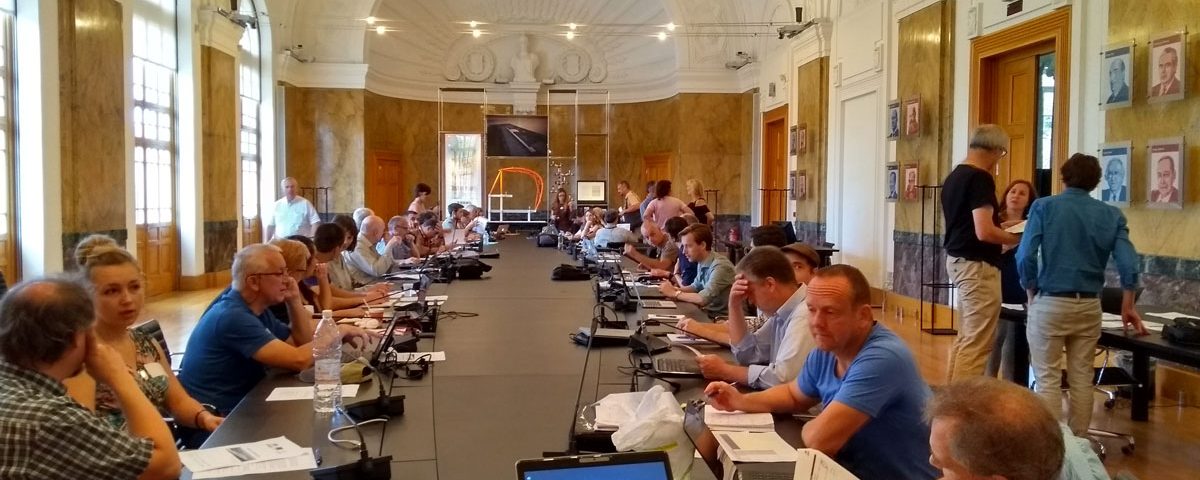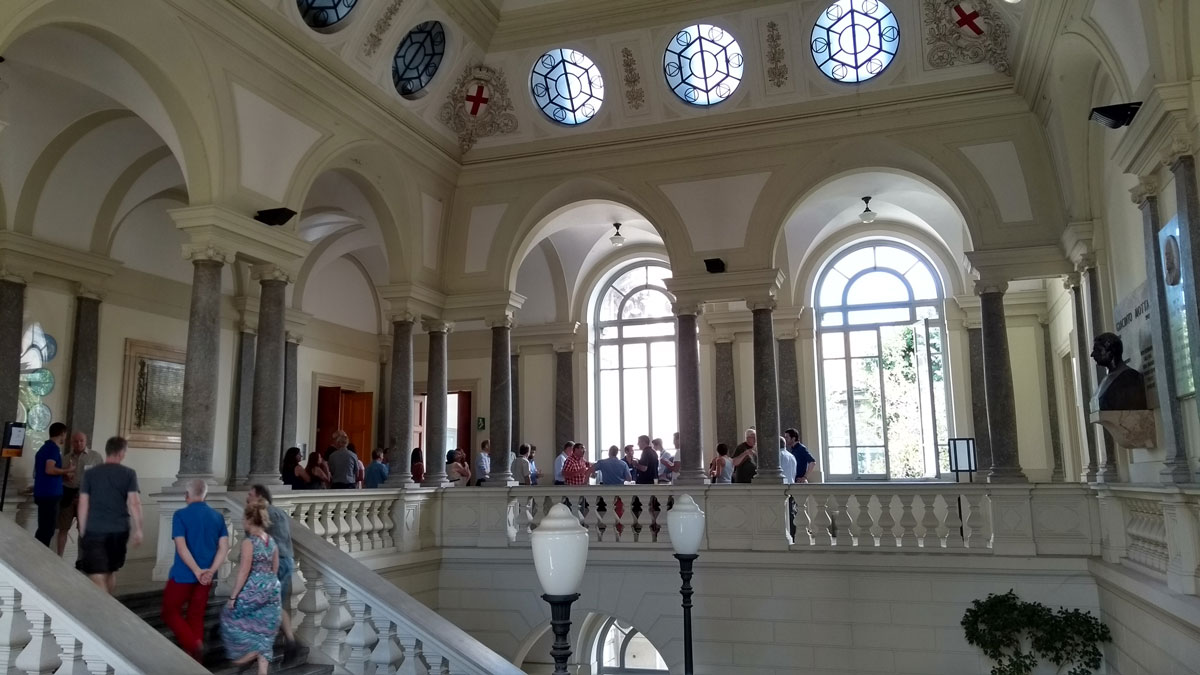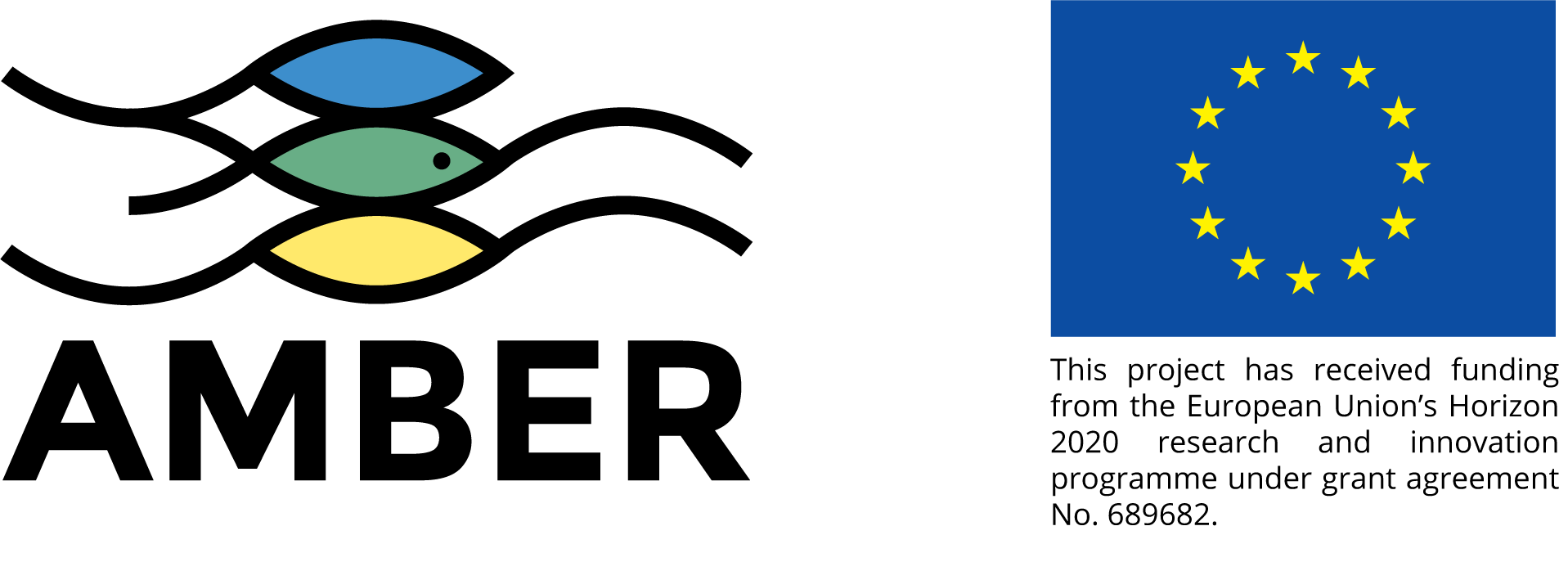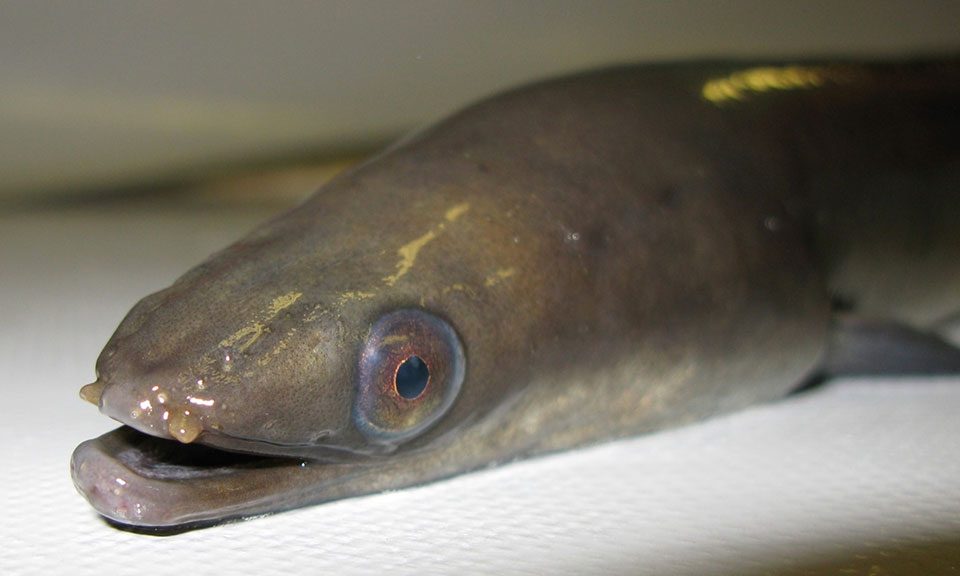Driving forward with connectivity in Milan: 2nd AMBER General Assembly

Using drones for quantitative habitat surveys: The case of Selside weir
August 9, 2017
Let it Flow, the AMBER Citizen Science programme
August 15, 2017
Authors
Ian Dodkins
AMBER (Adaptive Management of Barriers in European Rivers) had their second General Assembly and meeting in the beautiful city of Milan, northern Italy. The city is well known for being a centre of the fashion industry and indeed has the largest economy (GDP) out of all European non-capital cities. The Politecnico di Milano, one of the 20 AMBER partners, hosted the event within the University itself.

An important aspect of AMBER is collaboration with other projects that are doing parallel activities relating to barrier management and reconnecting rivers. Thus we had representatives from FIT-hydro (an EC project looking at hydropower dam mitigation strategies), Reconnect (a similar project to AMBER focusing on Ireland), KEEPFISH (barrier mitigation in Southern Hemisphere temperate zones) and Dam Removal Europe (NGO involved with improving river connectivity). All these projects gave talks on the first day and we also had updates from the Work Package (WP) leaders within AMBER.

There are exciting developments, with three papers already published from AMBER, including one on environmental DNA methods. Initial validation exercises for the European Barrier Atlas data are showing that differences in barrier densities between Member States may be more due to sampling method than due to the real number of barriers. Field work on hydromorphological stream mapping, biodiversity estimates, drone surveys and connectivity estimates to enable AMBER barrier decision tools to be developed have been ongoing. Test catchments where there is a clear conflict of interest regarding barriers have been identified to test many of the AMBER decision tools. The increasing interest in AMBER by water specialists and the public was also noted, with high levels of activity on Facebook, LinkedIn, YouTube, Twitter and the AMBER website. Also, the test phase for the AMBER ‘barrier tracker’ app has begun, with public release expected in April 2018; coinciding with World Fish Migration day.
The second day covered organisational aspects for the individual Work Packages as well as excellent presentations on some of the ongoing Case Studies, such as the Poutès Dam in France where Électricité de France (EDF) have reduced the reservoir size and are doing timed slow downs of the hydropower turbines to improve the migration of fish and river connectivity without significant effects on hydropower production.

The final day was the AMBER General Assembly and a round-up of the meeting including comments and guidance from USA specialists in stakeholder engagement and dam mitigation and removal, as well as an EC advisor, who form our External Advisory Board.
Of course, there was also fun in the evenings with food and dancing in La Balera dell’Ortica and delicious Italian cuisine in the L'Osteria di Lambrate on the second evening. With AMBER now being ¼ way through the project the progress so far has been excellent and the diverse group of researchers, NGOs and industry have come together with the common goal of producing decision support tools for barrier management to improve both river connectivity and economic benefits.




